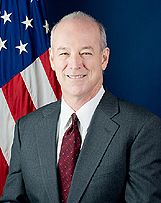For the past few weeks the FCC (Federal Communications Commission) in the USA has been allowing spectrum sharing in the controversial 5.9GHz safety band, even though it is officially still reserved for transportation safety applications only, it has been revealed by Ken Leonard, ITS Joint Program Office director at the USDOT.
The 5.9GHz spectrum is currently only supposed to be used for V2X (vehicle to everything) using DSRC (dedicated short range communications) – but in order to meet the unprecedented demand for wi-fi caused by the Covid-19 lockdown the FCC has opened up the band on a trial basis, ahead of its formal decision on spectrum sharing expected later in the summer.
 Writing in his new blog post ITS And You Leonard says, “Due to the current Covid-19 pandemic, the Federal Communications Commission has allowed the wireless spectrum allocated for transportation communications to be shared temporarily with wireless internet service providers to meet the demands of at-home education and telework.
Writing in his new blog post ITS And You Leonard says, “Due to the current Covid-19 pandemic, the Federal Communications Commission has allowed the wireless spectrum allocated for transportation communications to be shared temporarily with wireless internet service providers to meet the demands of at-home education and telework.
“The USDOT supports keeping the safety band free of interference, so we are monitoring the technical impacts of sharing with our existing V2X deployments and how the spectrum will be returned to transportation use as the nation reopens. I encourage you to read further about this, and our other spectrum testing, on the USDOT Safety Band web page.”
In the blog Leonard goes on to address some of the other key challenges facing transportation during the pandemic, including the pressure on shared mobility services, and how artificial intelligence might help to predict demand and plan new services.
“On-demand transportation providers (e.g., paratransit, rideshare) have experienced a dramatic decrease in ridership and revenues due to Covid-19,” says Leonard. “Travelers are more reluctant to use public transportation and other shared modes due to social distancing concerns. Understanding this trend is essential to improving transportation service availability post-pandemic to enable economic recovery. AI technologies can help plan for and potentially mitigate such impacts and offer us better tools to maintain safe operations during periods of crisis or change.”





